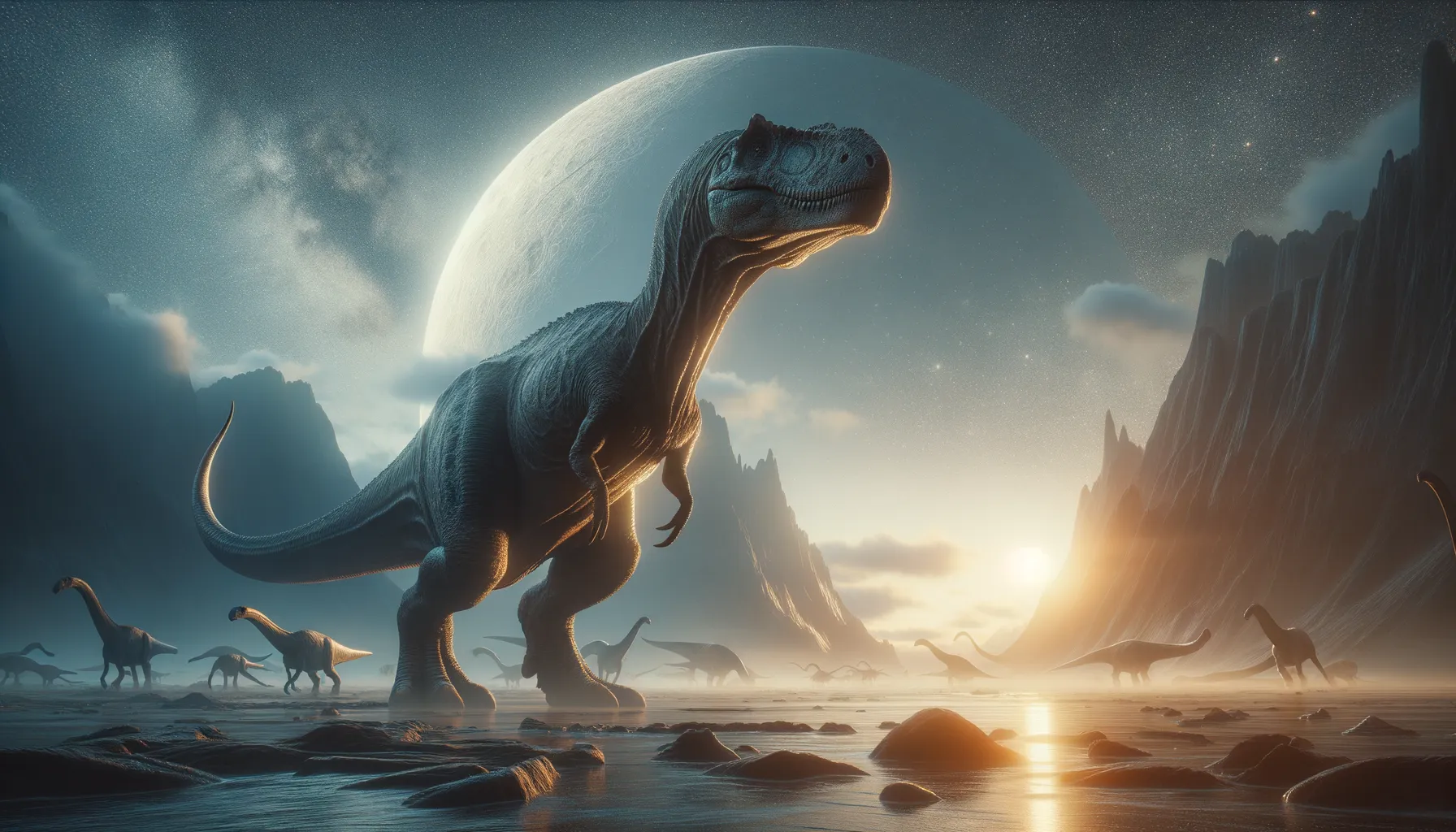
Vulcanodon
An early giant with lasting footprints.
Period
Jurassic
Length
Around 6.5 meters in length.
Height
Approximately 4 to 6 meters tall.
Weight
Estimated around 11 tonnes.
Vulcanodon was an early sauropod dinosaur believed to have roamed southern Africa during the Early Jurassic period. It is known for being relatively small compared to its later relatives, suggesting transitional features between early dinosaurs and the massive sauropods. Its fossils provide insight into the evolution of these giant creatures.
Diet
Vulcanodon was herbivorous, primarily feeding on plant material. Its diet included leaves and soft vegetation found in its habitat.
Hunting
Being a herbivore, it did not hunt. Instead, it foraged for plants. Its long neck helped it reach various types of vegetation.
Environmental challenges
Vulcanodon faced the challenge of finding sufficient food due to its large size. Seasonal changes might have affected plant availability, influencing migration patterns. Predators posed a threat, particularly to the young or weak individuals, requiring them to live in groups for protection.
Speed
Likely slow, similar to other large sauropods.
Lifespan
Typical for large dinosaurs, perhaps several decades.
First discovery
Discovered in Zimbabwe in 1969 by Michael A. Raath.
Fun Facts
- Vulcanodon was one of the earliest known sauropods, large plant-eating dinosaurs with long necks and tails.
- Its name, Vulcanodon, means 'volcano tooth' because its fossils were found near volcanic rocks in Zimbabwe.
- Vulcanodon lived during the Early Jurassic period, around 200 million years ago.
- Despite its large size, Vulcanodon is believed to have been relatively small compared to later sauropods, measuring about 21 feet long.
- Fossils of Vulcanodon were first discovered in the 1960s and formally described in 1972.
- Vulcanodon gives scientists important clues about the early evolution of sauropods, a group that later included giants like Brachiosaurus and Diplodocus.
- Its simple teeth suggest that Vulcanodon likely fed on soft vegetation, indicating a shift in diet compared to its predecessors.
Growth and Development
Like other sauropods, Vulcanodon grew rapidly, reaching adulthood in a few years. Its bone structure suggests it experienced continual growth throughout its life. The development was possibly driven by environmental pressures and the need to escape predation as quickly as possible.
Habitat
Vulcanodon inhabited floodplain environments, which provided lush vegetation. These areas were prone to seasonal flooding, creating diverse floral landscapes. Water sources attracted numerous species, making these regions vibrant ecosystems.
Interaction with other species
Vulcanodon likely coexisted with other herbivorous dinosaurs, competing for similar food resources. It may have lived alongside early theropod predators. Its presence in herds suggests communal interactions were crucial for survival in a challenging environment.
Natural lifespan
Vulcanodon's lifespan was likely similar to other sauropods, living several decades.
Reproduction
Vulcanodon reproduced by laying eggs, similar to other dinosaurs. Nesting sites were likely chosen carefully to ensure safety and access to food. Parental care, if present, would have been minimal, with young left to fend for themselves soon after hatching.
Social behaviour
Evidence suggests Vulcanodon may have lived in herds. Herding behavior provided protection from predators, as well as social interaction. Group living also facilitated better access to resources.
Fossil locations
The primary fossils of Vulcanodon have been found in Zimbabwe. These finds have been crucial in understanding early sauropod evolution. Additional fossils could help refine its position within the dinosaur family tree.
